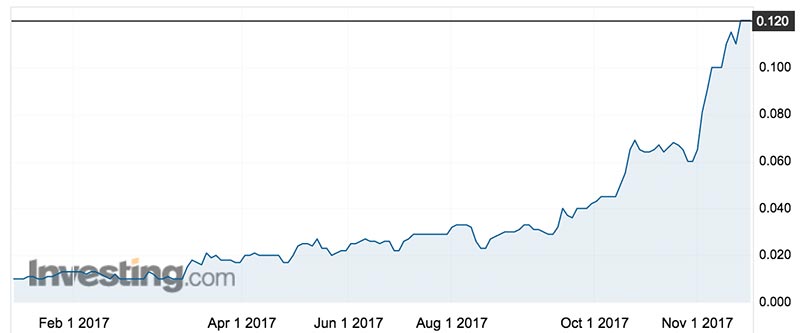Why Collerina Cobalt has gained 1100pc – and it’s not cobalt
Mining
Mining
Theoretically, Collerina Cobalt’s 1100 per cent rise from 1c to 12c since March can be explained by having cobalt in its name.
But that’s a small part of the story. The more interesting aspect is that investors appear to be following a man more than a metal.
Norm Seckold, a serial project developer and company director, has been conspicuous by his absence from the latest mining boom which is being driven by technology metals such as cobalt, lithium and graphite.
Over the past 30 years Seckold has been involved with a string of mining companies, most successful, some not so.
His resume includes one-time household names such as Bolnisi Gold (gold and silver in Mexico), Viking Gold (gold in Sweden), and Perseverance Corporation (gold in Victoria).
He smiles broadly when reminded of past booms, and laughs when asked whether he couldn’t resist the temptation to saddle up for return ride at Collerina, a remote part of western NSW which has a long history of mineral discovery.
“We’ve got a good project and seems like the right time to get it moving,” he said at an investor briefing.
However, when you dig into Seckold’s latest adventure in mining you discover something equally as interesting as the man himself — the secondary role of the metal in Collerina Cobalt’s name, with the potential money-maker being a less well-known commodity, high-purity alumina (or HPA).

An ultra-refined form of the material which can become, in its cheapest form, aluminium, with a price of around $US400 a tonne — or worth $US25,000 (and more) per tonne when enhanced to 99.99 per cent purity — HPA has a rapidly growing market in light emitting diodes (LED) and as a separator in lithium-ion batteries.
New technologies are the key to Collerina Cobalt (ASX:CLL).
But when you continue to explore the company you find it’s not just an old (ish) man making a reappearance. It’s also second-time around for the key asset in the company.
Some investors might remember the Collerina mineralised system as the Homeville nickel project, in which case they might also remember that Collerina Cobalt was once called Augur Resources.
“Everything old”, as the late Peter Allen once sang, “is new again”. That certainly applies to Collerina Cobalt — and with all due respect to the 69-year-old man behind the company.
To best understand Collerina Cobalt and its project, it’s worth going back to ground zero, a time in mid-2008 when Augur was pleased to announce that it outlined 12.2 million tonnes of material assaying 0.91 per cent nickel and 0.06 per cent cobalt for a contained 110,000 tonnes of nickel and 7300 tonnes of cobalt.
No prize for guessing that mid-2008 was around the time the world was rocked by the global financial crisis. But definitely a prize for anyone who remembers that the price of nickel just before the GFC hit a spectacular $US22 a pound, before plunging to $4/lb, and less.
Compounding the problems for Homeville is that its nickel and cobalt were contained in a lateritic ore which meant expensive treatment in a part of Australia with no nickel laterite experience – not that WA, the home of laterite nickel, has had much to boast about with most of its acid-leach projects closing soon after opening.

Homeville today is reborn, renamed and re-focused with the aim being to develop a project which has HPA (a commodity not even mentioned back in 2008) as its target, using a new ore processing technology to move further up the value chain with HPA expected to be five-times more valuable than the combined value of nickel and cobalt extracted in the process.
The past three months have seen Collerina Cobalt develop more of a following, initially because of a high-grade cobalt intersection from fresh drilling with a best assay of 18 metres at 0.21 per cent cobalt.
That news, reported on August 1, lifted the stock from 2.9c to 3.3c
On October 5, it was HPA which became the newsmaker, first with a report that the new technology (counter-current atmospheric leaching) had returned excellent nickel, cobalt and aluminium recoveries, lifting the stock from 4.5c to 6.9c.
A week ago, on November 13, came news that a sample of HPA had been produced, sending Collerina Cobalt from 10c to 12c.
There is a pattern in those share-price moves which have been driven by news-flow and in the methodical was Seckold and his team have returned to an old discovery, applied new science, to shift an old company towards a future as a producer of a new generation of metals.
Perhaps Peter Allen got it right back in the 1970s, everything old really can be new again.